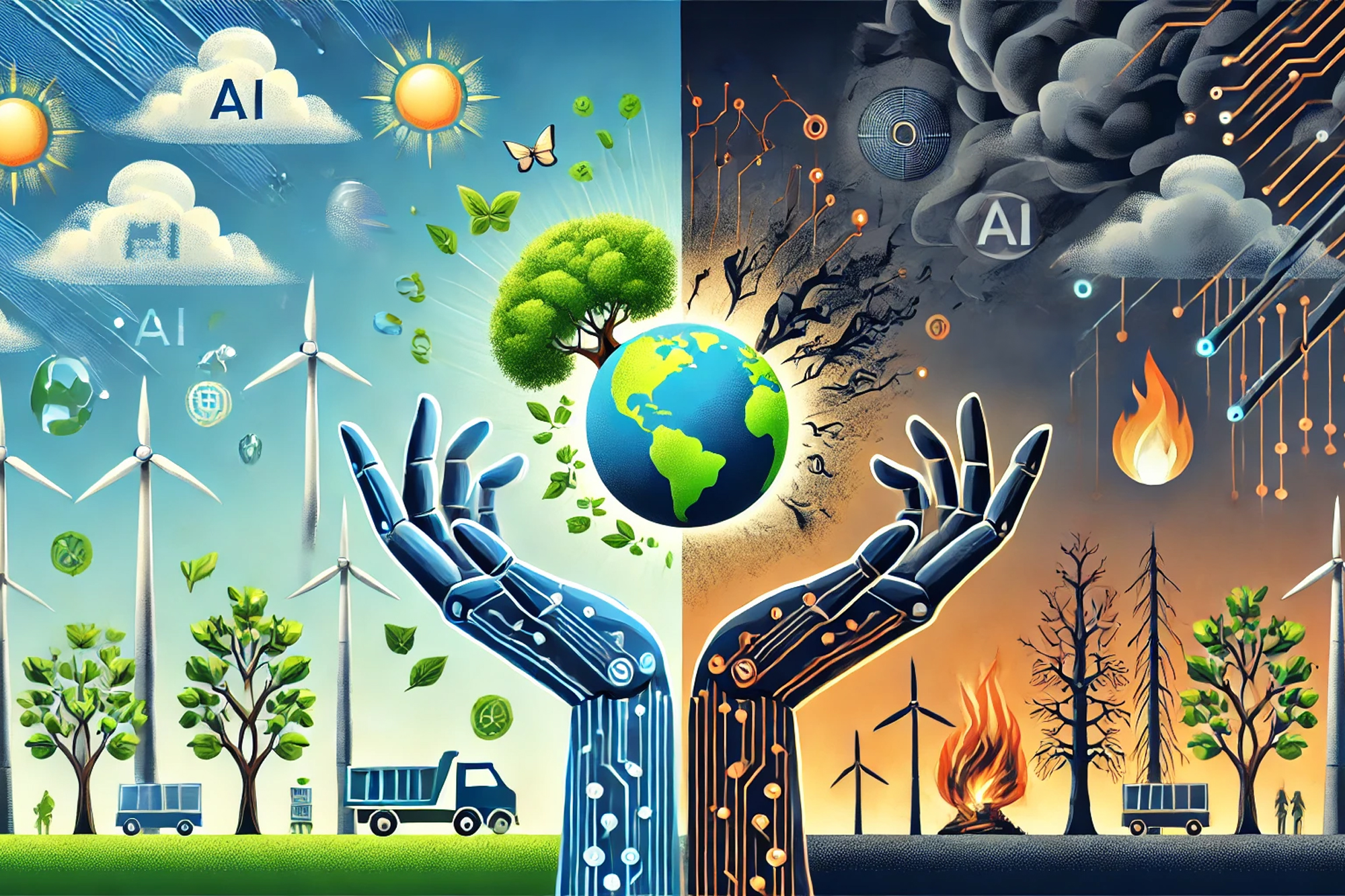
AI: The Promise and Peril for the Planet
Dec 04, 2024
Above: The AI image was generated using DALL·E.
For the past few decades, we have lived in the “Digital Age.” Now, we are stepping into a new one — the Age of AI.
While artificial intelligence (AI) has existed in primitive forms since the 1950s, it has now advanced to a readily accessible and ubiquitous state. Browser-based programs like ChatGPT are well-known, but they represent only a small portion of the scope, demands, capabilities and consequences of AI.
At its inaugural symposium last September at the University of Utah, the One-U Responsible AI Initiative invited over two hundred attendees, including researchers, university faculty, government officials, and industry leaders, to discuss the role and responsible usage of AI. Three key issues were addressed at the first panel of the symposium; the environmental impacts of AI, the dangers of AI-generated misinformation, and the application of AI for wildfire forecasting, an issue that poses challenges for the West’s electrical grid.
Resilience and sustainability
William Anderegg, director of the U-based Wilkes Center for Climate Science & Policy, is the executive committee member who leads the One-U RAI’s environmental working group. The group’s members bring their diverse expertise to establish ethical policy, explore AI’s impact on society and the environment, and develop responsible methods for using AI to improve climate research.
The working group’s vision is to utilize AI to bolster our resilience to climate change with collaboration, training, technology, and ethical governance.
AI for wildfire forecasting
Researchers, including Derek Mallia, research assistant professor of atmospheric sciences, have also utilized AI to forecast wildfires and its hazardous smoke.
“When you think of extreme weather, you think of hurricanes, tornadoes and so on. But one of the biggest causes of mortality is actually poor air quality,” said Mallia. “Wildfires cause a degradation in air quality during the summer, and these effects are becoming more widespread. We’re not just seeing smoke across the western U.S., but also in areas that traditionally don’t see a lot of wildfire smoke—parts of NewYork, for example.”
Read the full article by Ethan Hood in @TheU.